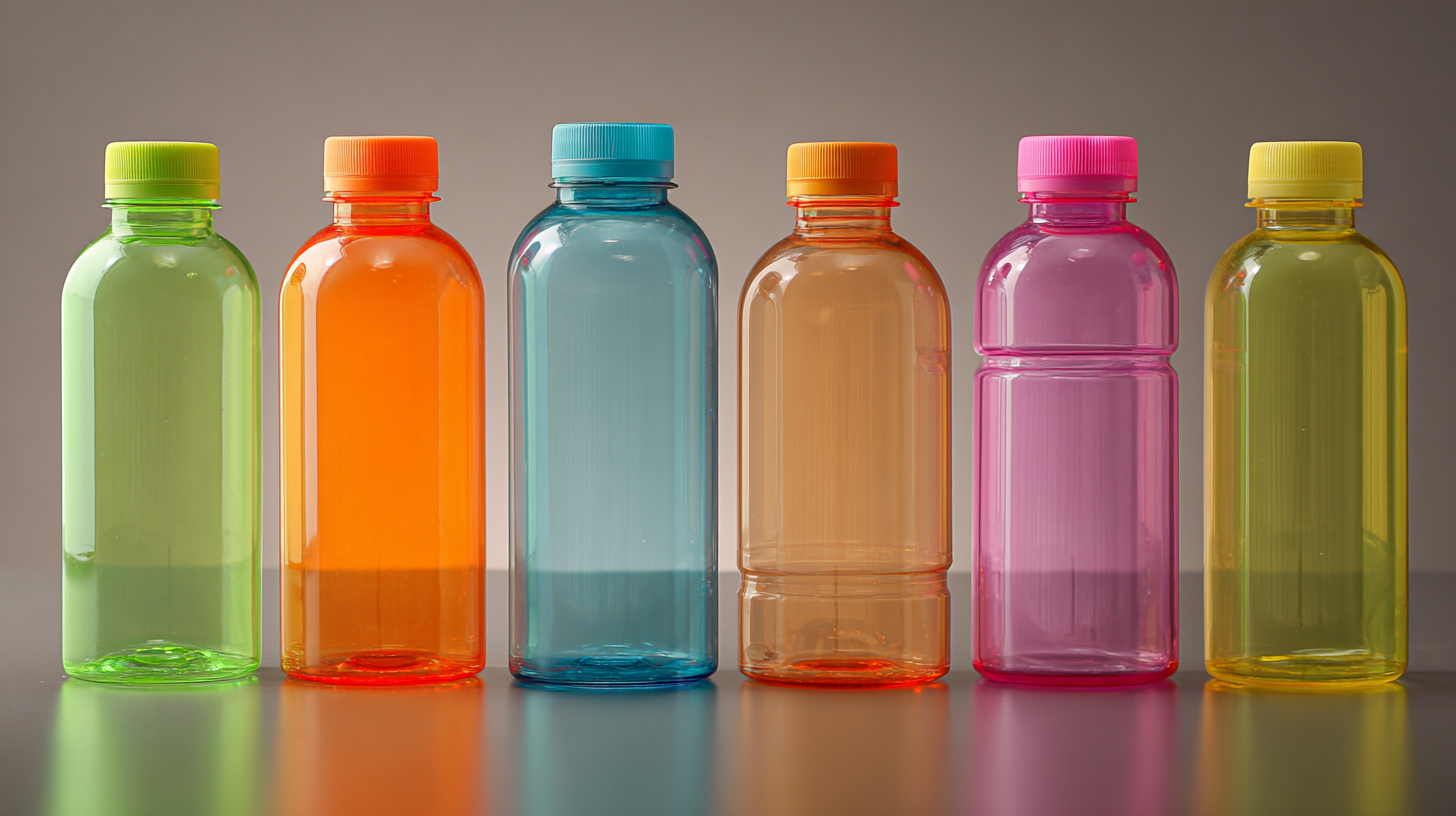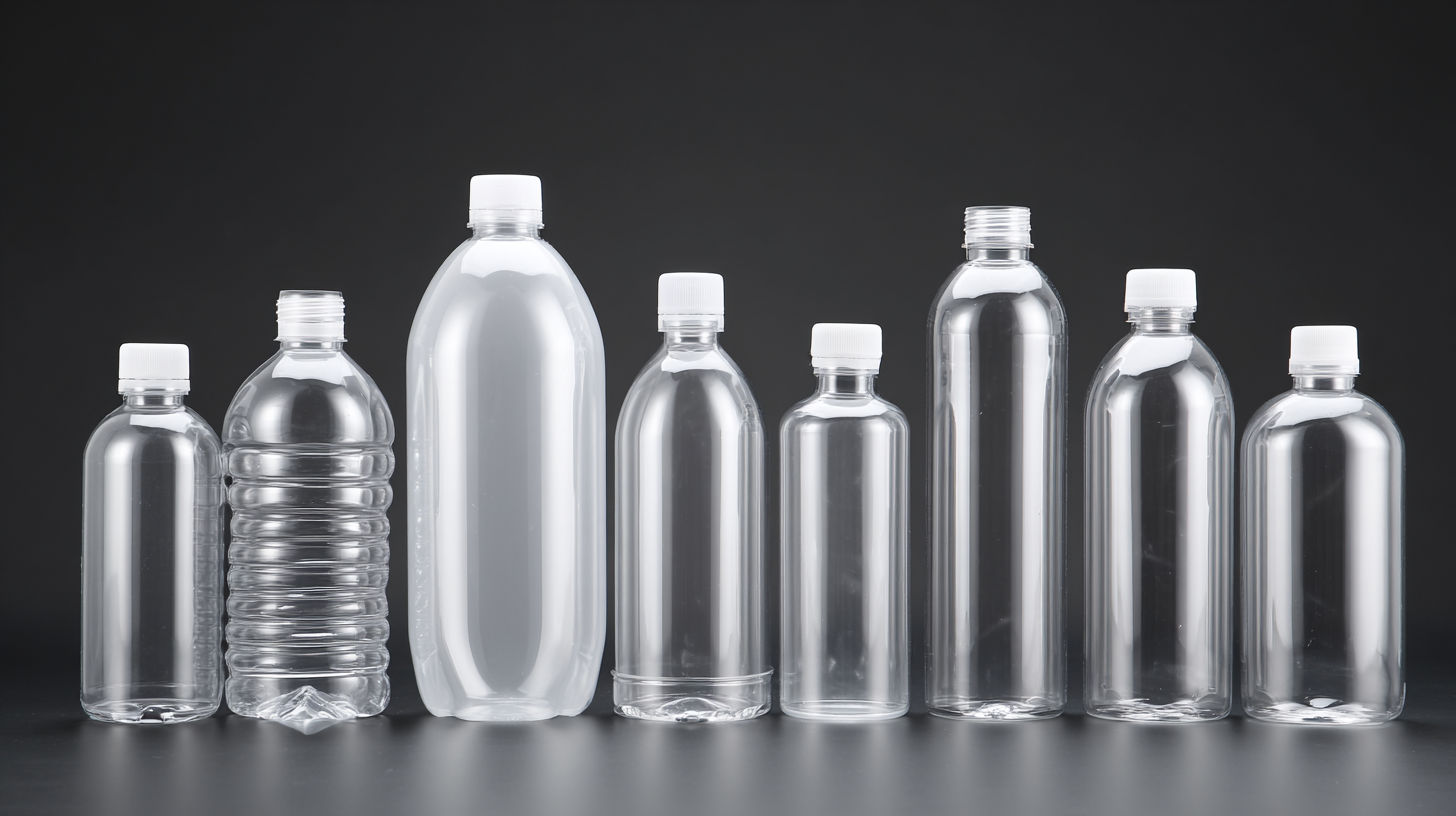Comprehensive Technical Specifications for Best Plastic Bottles With Caps
In recent years, the global market for Plastic Bottles With Caps has experienced remarkable growth, with a projected increase from USD 40 billion in 2020 to nearly USD 53 billion by 2026, according to a report by MarketsandMarkets. This surge is driven by the rising demand for environmentally friendly packaging solutions and the expanding beverage industry. As the leading manufacturers innovate to meet diverse consumer needs, the importance of comprehensive technical specifications becomes paramount for quality assurance and performance. "全球领先制造,中国优质出品" not only reflects China’s strategic position in the global supply chain but also emphasizes the commitment to delivering high-quality plastic bottles that ensure reliability and sustainability. Understanding these specifications is crucial for stakeholders aiming to navigate this competitive landscape and optimize their product offerings.

Evolution of Plastic Bottle Technology: Key Features and Innovations for 2025
The evolution of plastic bottle technology is driven by innovative practices and modern tools that cater to the demands of sustainability and efficiency in packaging. As we approach 2025, several technologies emerge at the forefront of this transformation. Artificial Intelligence (AI) enhances the precision in manufacturing processes, allowing companies to predict maintenance requirements and optimize production lines. The Internet of Things (IoT) enables real-time monitoring of the supply chain, ensuring durability and quality of plastic bottles during their lifecycle.
Additionally, blockchain technology is redefining transparency in packaging, allowing consumers to trace the origins of materials used in plastic bottles, promoting responsible sourcing and recycling initiatives. Robotics play a crucial role in automating repetitive tasks, improving accuracy in filling and capping processes while reducing waste. Together, these technologies represent the next wave of packaging innovations, aligning with the growing emphasis on sustainable practices in industries like hospitality, where culinary experiences are increasingly crafted with environmentally-friendly packaging solutions.
Sustainable Materials: The Shift Towards Eco-Friendly Plastic Bottle Production
The plastic bottle industry is undergoing a significant transformation as sustainability takes center stage. With over 1 million plastic bottles bought each minute globally, the environmental impact is staggering, prompting consumers and manufacturers alike to seek eco-friendly alternatives. Recent studies indicate that by adopting sustainable materials, such as bioplastics derived from plants and recycled plastics, the carbon footprint of plastic bottle production can be reduced by up to 30%. This shift not only addresses ecological concerns but also aligns with consumer preferences: a 2022 survey found that 66% of consumers are willing to pay more for products from brands committed to sustainability.
Manufacturers are now exploring innovative materials like polyethylene terephthalate (PET) made from 100% recycled content and bio-based polyethylene (bio-PET), which significantly lessen dependence on fossil fuels. According to a report by Smithers Pira, the global biodegradable plastics market is expected to reach $36 billion by 2024, highlighting the growing demand for eco-friendly packaging solutions. As production techniques evolve, the industry is poised to make significant strides toward reducing plastic waste, with companies increasingly integrating sustainability into their core practices to meet both regulatory standards and consumer expectations.

Smart Cap Technologies: Enhancements for User Convenience and Product Preservation
In an era where convenience and product integrity are paramount, smart cap technologies are revolutionizing the plastic bottle market. These intelligent caps, equipped with features like integrated sensors and user-friendly designs, enhance the overall consumer experience. They allow for better tracking of contents and provide alerts when a product is tampered with or near its expiration date, ensuring that the user receives the highest quality product.
Moreover, advancements in smart cap technologies also address preservation needs, making it easier to maintain the freshness of beverages and other liquids. For instance, some caps are designed to create a vacuum seal, preventing oxidation and keeping the contents safe for longer periods. This innovation not only reduces waste but also helps consumers to enjoy their drinks at optimal quality, transforming the way products are consumed and stored. As these technologies continue to evolve, they are setting new standards for product safety and user convenience in the plastic bottle industry.
Design Trends: Aesthetic and Functional Developments in Plastic Bottle Manufacturing
In recent years, the plastic bottle manufacturing industry has witnessed a significant shift towards both aesthetic and functional advancements. According to a report by Smithers Pira, the global plastic bottle market was valued at $47.5 billion in 2020 and is forecasted to grow at a compound annual growth rate (CAGR) of 4.6% through 2025. This growth is driven by innovative designs that not only appeal to consumers visually but also enhance functionality. Manufacturers are increasingly adopting materials that are not only lightweight but also recyclable, aligning with the growing demand for sustainable packaging solutions.
The aesthetic aspect of bottle design is also evolving, with companies exploring unique shapes, colors, and branding elements that attract consumers. A survey conducted by the Plastics Industry Association revealed that 65% of consumers are influenced by the product's packaging design when making a purchasing decision. This highlights the importance of integrating functional features, such as ergonomic grips or easy-to-open caps, with visually appealing designs to enhance user experience. As designers focus on improving the usability of plastic bottles, the industry is not only meeting consumer demands but also adapting to environmental considerations, creating a dual focus on sustainability and style.
Comprehensive Technical Specifications for Best Plastic Bottles With Caps - Design Trends: Aesthetic and Functional Developments in Plastic Bottle Manufacturing
| Specification | Detail | Trends |
|---|---|---|
| Material Type | PET, HDPE, LDPE | Moving towards sustainable materials |
| Capacity | 250ml to 2L | Increasing variability to meet consumer needs |
| Cap Type | Screw, Flip top, Snap-on | Innovations in closure design for better user experience |
| Recyclability | 100% recyclable | Focus on circular economy principles |
| Design Features | Ergonomic shapes, textured grips | Enhanced aesthetics and functionality |
| Color Options | Transparent, Opaque, Custom colors | Personalization and branding opportunities |
| Barrier Properties | Oxygen, CO2 barriers for beverage preservation | Innovating for longer shelf life |
Regulatory Changes: Compliance and Safety Standards for Plastic Bottles in 2025
As we approach 2025, significant regulatory changes are anticipated in the plastic bottle industry, specifically concerning compliance and safety standards. With increasing environmental concerns and a push for sustainability, manufacturers must adapt to new laws that address the use of recycled materials, biodegradability, and the overall lifecycle of plastic products. These regulations are aimed at ensuring that plastic bottles not only meet safety requirements but also minimize their ecological footprint.

Compliance with these forthcoming standards will require plastic bottling companies to invest in innovative technologies and processes. This may include altering the materials used in production to comply with stricter recycling guidelines or implementing advanced quality control measures to guarantee safety. Furthermore, businesses will also need to educate consumers about the significance of these changes and promote responsible disposal and recycling practices. As the industry evolves, it will be crucial for manufacturers to prioritize transparency and sustainability, aligning their goals with a growing global movement towards environmental responsibility.
